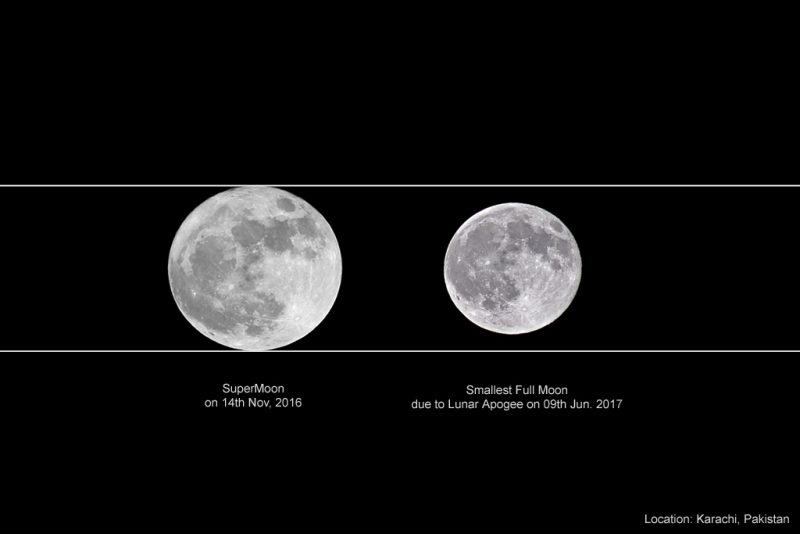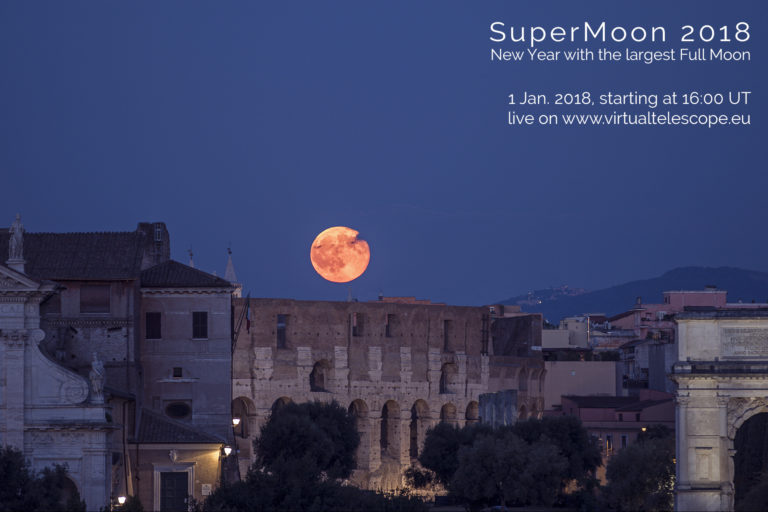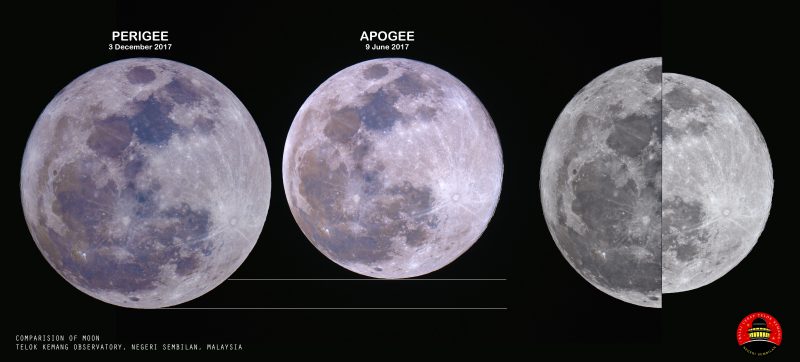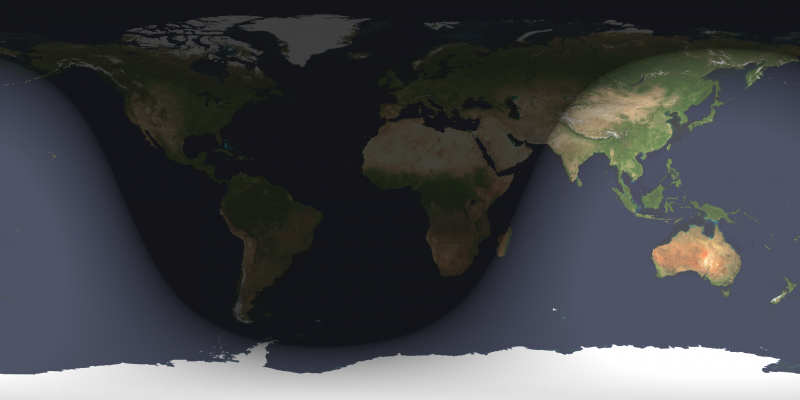
See more images of December’s supermoon.
The first of two January 2018 full moons falls on the evening of January 1, 2018, for most of the Western Hemisphere (January 2 for the Eastern Hemisphere). This full moon comes only 4.5 hours after the moon reaches lunar perigee – the moon’s closest point to Earth in its monthly orbit. Thus this full moon presents the closest – and thereby the largest and brightest – supermoon of 2018.
Of the 13 full moons and 14 lunar perigees occurring in 2018, this is the closest alignment of full moon and lunar perigee for the year.
This close coincidence of full moon and perigee in early January 2018 not only gives us the closest full moon of 2018 but also the closest lunar perigee of 2018. See below to note the nearness in time of this perigee and full moon.
Lunar perigee distance (2018 Jan 1 at 21:54 UTC): 356,565 km
Full moon distance (2018 Jan 2 at 2:24 UTC): 356,846 km



Although the moon turns precisely full at the same instant worldwide (January 2 at 2:24 Universal Time), the time – and possibly the date – of the full moon varies according to one’s time zone. At North American and US time zones, the full moon actually comes to pass on the evening of January 1 at these times:
22:24 (10:24 p.m.) Atlantic Standard Time (AST)
21:24 (9:24 p.m.) Eastern Standard Time (EST)
20:24 (8:24 p.m.) Central Standard Time (CST)
19:24 (7:24 p.m.) Mountain Standard Time (MST)
18:24 (6:24 p.m.) Pacific Standard Time (PST)
17:24 (5:24 p.m.) Alaska Standard Time (AKST)
16:24 (4:24 p.m.) Hawaiian Standard Time (HST)
Astronomers say the moon is full at the instant that the moon is directly opposite the sun in ecliptic or celestial longitude. Another way of looking at it, the moon-sun elongation at full moon equals 180o. Click here to find out the present moon-sun elongation, remembering that a positive number means a waxing moon and a negative number a waning moon.
However, since the moon stays more or less opposite the sun throughout the night tonight, we can say the moon is full all night long. Around the world tonight, we can expect the moon to rise around sunset, climb highest up for the night around midnight and to set around sunrise. On the night of the full moon, the moon typically shines from dusk until dawn.

Tonight’s full moon is the second in a series of three successive full moon supermoons occurring on December 3, 2017, plus January 2 and 31, 2018. As is typically the case, the second of these three full moon supermoons most closely coincides with lunar perigee, showcasing the closest and largest supermoon in this grand procession of supermoons.
Full moon distance (2017 Dec 3 at 15:47 UTC): 357,987 km
Lunar apogee distance (2017 Dec 4 at 8:42 UTC): 357,492 kmFull moon distance (2018 Jan 2 at 2:24 UTC): 356,846 km
Lunar perigee distance (2018 Jan 1 at 21:54 UTC): 356,565 kmFull moon distance (2018 Jan 31 at 13:27 UTC): 360,199 km
Lunar perigee distance (2018 Jan 30 at 9:54 UTC): 358,995 km
Tonight’s full moon is also the first of two January 2018 full moons. Some people will call the next full moon on January 31 a Blue Moon because it’s the second of two full moons to occur in one calendar month. Moreover, this second supermoon of January 2018 will stage a total eclipse of the moon.
Super Blue Moon eclipse coming up on January 31
Seven lunar months (full moons) after the year’s closest supermoon will usher in the smallest full moon of the year (micro-moon) on July 27, 2018. At that juncture, the full moon and lunar apogee – the moon’s farthest point from Earth in its orbit – will both fall on the same date. That full moon on July 27, 2018, will be nearly 30,000 miles (50,000 km) farther from Earth than tonight’s closest and largest supermoon.

Bottom line: Enjoy the “most super” supermoon of the year on the night of January 1-2, 2018, as it lights up the nighttime from dusk to dawn.
Resources:
Phases of the moon: 2001 to 2100











